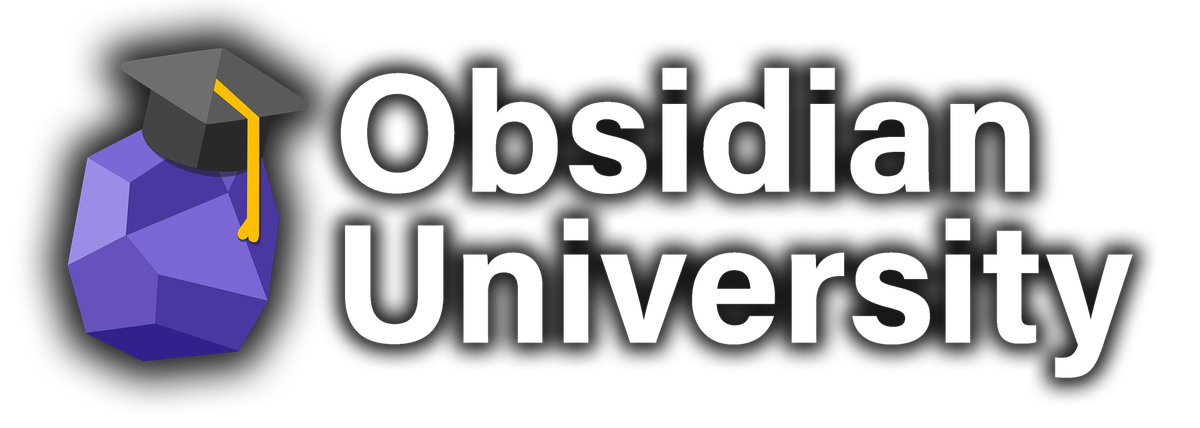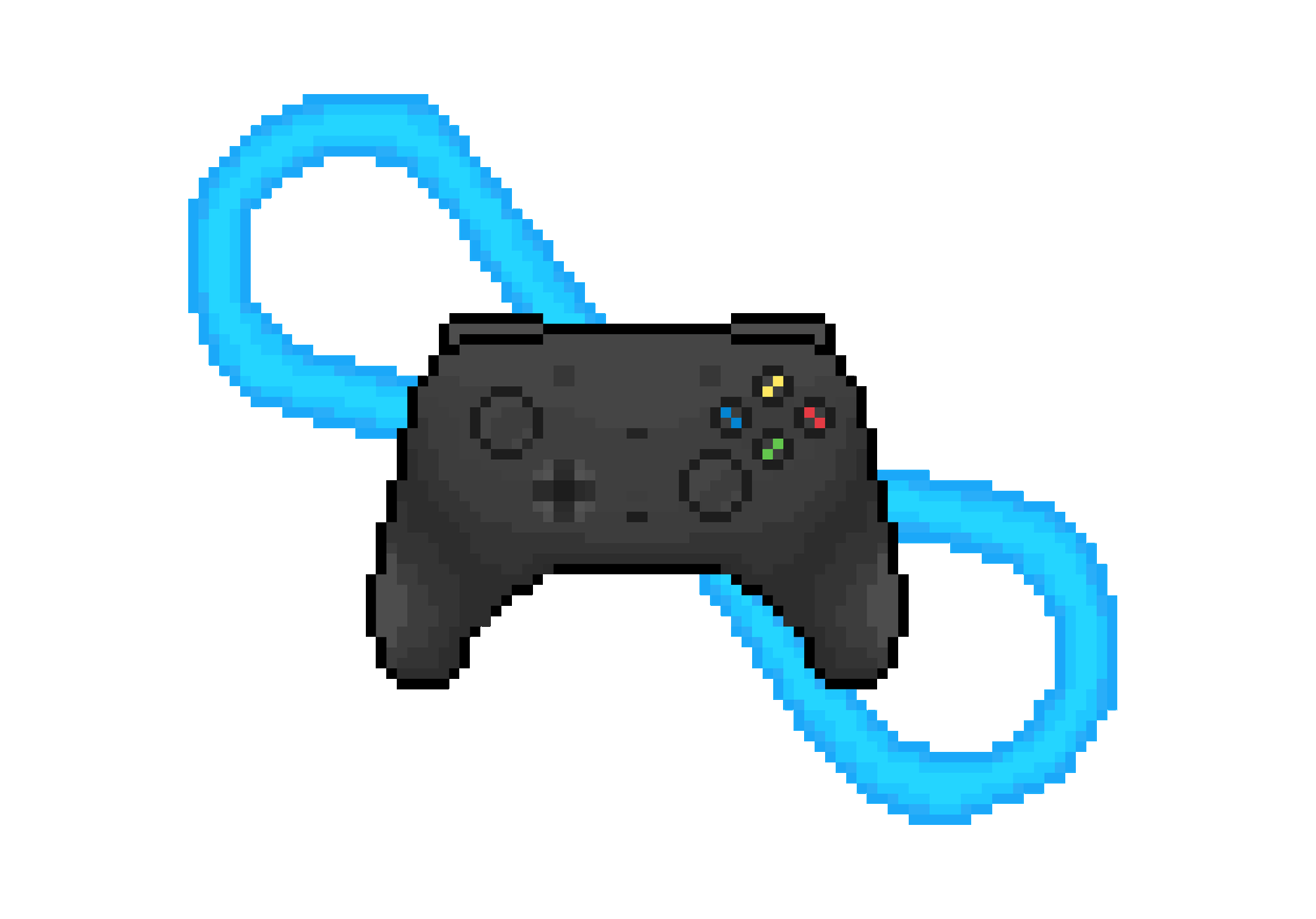How I Made Obsidian University While Juggling A Full Time Course Load, 4 Clubs, And A Girlfriend

Summary Statement: I created Obsidian University with my business partner John Mavrick. To date it has helped 200+ students get good grades in less time, enjoy school more, and learn more effectively through leveling up their notetaking and studying strategies with Obsidian. Learn how we did it below.
Audience: College students across the globe.
Responsibilities: Learning Experience Design (action mapping, storyboarding, prototyping, and full building), visual design, web design, videography, eLearning development, collaboration.
Tools Used: Canva, YouTube, Obsidian, Kit (formerly Convertkit), Webflow, Thrivecart.
The Problem And Solution
Beginning college, I and countless other students feel so burdened by the weight of homework, projects, and exams, our grades take a hit, and we lose out on other parts of the college experience. We spend so much time obsessing over studying we forget to enjoy the learning in the first place.
One of the main reasons for this is students are rarely taught proper notetaking and studying techniques. Without these techniques, we spend more time studying than we need to, cramming for exams only to forget everything the next week.
One night my sophomore year, after canceling another hang out with my friends to study for a Chemistry exam, I decided things needed to change.
So I dove into the Personal Knowledge Management (PKM) Space. I talked to 30+ subject matter experts on notetaking and studying through my PKM podcast, and created myriads of PKM content on my YouTube channel, newsletter, and blog. I read countless books on notetaking and studying including Make It Stick, How To Take Smart Notes, Building A Second Brain, and more.
My business partner John Mavrick and I got together and began fleshing out Obsidian University. This was while I was handling a full Cornell course load, four clubs, and a girlfriend. People said it wasn't practical. But I couldn't sit back and watch while students continued to suffer.
Our idea was to create a video course to help students learn more effectively through leveling up their notetaking and studying strategies using linked notetaking app Obsidian. This would save them time studying opening it up for other parts of college. And it would teach them to enjoy learning intrinsically by giving them the mindsets and methods they need to become lifelong learners.
Here's the story.
Our Process
We'd never made a course before this one so one of our early problems was deciding on a process for creating it.
After researching a variety of frameworks, we leaned on the ADDIE model which builds an experience through analysis, design, development, iteration, and evaluation.
Analysis
We first assessed students problems through interviewing 10+ students in our audiences and talking to students at Cornell. Using our insights, we created an action map. This is a diagram which shows how you can achieve a goal through actions, rather than just knowledge regurgitation. We decided our business goal would be: increase students self-enjoyment of school by 20% and GPA by 5% over one semester. We highlighted skill gaps in orange.

Using the action map we realized the three most important actions for students to be able to do in Obsidian was following the collect, connect, create process for notetaking and studying. This process would help students most closely with improving their GPA through improving their notetaking and studying.
The question then became: who would do what?
I was a extroverted public speaker, YouTuber, writer, and teacher. John was an introverted coder and YouTuber who didn’t like showing his face to the public. We decided John would handle most of the back end coding for the course, while I handled most of the lesson writing, video creation, and learning experience design.
Design
John and I decided the best means to teach students these skills was through an online based video course and a community discord. This is because our audience is largely online and geographically distant and the skills we needed to teach were visual in nature. There were also a number of mindsets we wanted to imbue that would help them enjoy school more which we believed would be more effectively pushed through video than solely writing. To improve application, we wanted to make the course inside Obsidian so students could implement their learnings instantly and directly.
Knowing the medium of our course, we created a storyboard/outline which went through a number of rounds of feedback as we sent it to our audiences through our email list. Here’s the outline we came up with:
Course Outline Toggle (No Need To Read Full Thing)
Preface: Breaking Out Of The Cookie Cutter Student Mindset
- How you can fall in love with learning again
- Why you should learn the art of notetaking
- Why Obsidian is the right tool to do this
Section 1 - Obsidian 101: A Beginners Guide To Supercharging Your Learning With Obsidian
Module: Learning Obsidian's Core Features:
- Understand the Obsidian note taking process and layout by learning it’s core features
- Create your own personal Wikipedia with bi-directional links
- Efficiently style and format your notes using Markdown
- Write and navigate notes at the speed of thought using hotkeys
- How to visually personalize your Obsidian workspace using them
Module: Seven Obsidian Plugins To Explode Your Notetaking
- Automatically search and organize your notes using the Dataview plugin
- Save hours by automating note creation with the Templater plugin
- Create different note types at lightning speed using the QuickAdd and Metadata Menu plugin
- Navigate daily and weekly notes using the Calendar plugin
- Easily turn your notes into flashcards using the Spaced Repetition plugin
Module: How To Easily Personalize Obsidian For School
- Hierarchically organize everything you’re learning using course, unit, and lecture notes
- Combine knowledge across classes and semesters to create a lifelong knowledge base using maps of content (MOC) and concept notes
- Make your best creative work using assignment and essay notes
- Reflect on your progress and plan for the future using the daily and weekly notes
- Easily navigate throughout your vault using customizable home and school dashboards
Module: How To Get Better Grades While Studying Less In Obsidian
- Implement elite studying principles like spaced repetition and active recall into your notes
- Build mastery on all course material by using retrospective timetables for studying
Section 2 - The Three Step Process To Building A Unique Knowledgebase: Collect, Connect, Create
Module: Collect
- How to navigate the overwhelming amount of information in school with a collect toolkit and your twelve favorite questions
- Keep track of and create different note types for lectures, textbooks and required readings
- Methods to finish your class readingsmuch faster and with greater understanding
- How to take unique, personal, lecture notes you can study with and connect between classes and semesters (even in STEM)
Module: Connect
- Methods for growing your notes over time
- The four-step Map of Content (MOC) course creation process we use to maximize understanding of our college classes in Obsidian
- How to connect and navigate your notes using Maps of Content (MOCs)
Module: Create
- The 3-step process I use to write essays in record time with my Obsidian notes
- How to compound your knowledgeacross classes and semesters using Intermediate Packets
- The amazing variety of things you can create with your Obsidian notes both inside and outside school
- How to ingrain habits and rituals that will make the course learnings STICK
Development
Outline finished it was time to start writing. Finding time alongside my course load, clubs, and girlfriend was hard, but I managed to flesh out three hours each morning to write lessons. I would focus on my other commitments in the afternoon.
Each day I would wake up, take a cold shower because I like to be cliche, go on a run, and then sit down at my computer to write. If life was feeling particularly nice it would bless me with a sunshine through my window.
Here’s what it looked like on the inside:



After finishing the first version of the course we ran into a problem: how would we get students to take it for feedback?
Students can barely afford ramen noodles let alone a course. We navigated this by launching a prototype to a beta-cohort of students at 50% the full price. It worked! We got twenty students to sign up right away.
We integrated their feedback and I created videos for each of the lessons. Then, we designed a sales page for the course in Webflow, a free email course lead magnet to the full paid course (3 Days To Lecture Notetaking Mastery In Obsidian), and a few YouTube videos leading to the course.
But the course was still isolated, completely against the nature of student learning.
So we decided to create a community discord for students to interact with each other and have direct access to John and I. Here students could connect with each other, share learnings, and ask questions.
Iteration
Finally, we launched the course at full price to our audiences through our email lists. To this day the course has had over 200+ students and made $20,000+ in revenue. You’ll be happy to know I did not spend all of the revenue playing video games.
After a short celebration—and one Reeses Peanut Butter Cup—John and I created a Kanban board in Notion and began asking for feedback from students. We placed suggestions in the Kanban and chipped at them over a period of three months.
Evaluate
Following Kirkpatrick’s model of training evaluation, we first evaluated level one, the student reaction through our testimonials. Here are some of the testimonials we have gotten:
Here’s an interview I had with one of our students on my podcast:
We assessed levels two and three learning and behavior, through the actions shown in the community discord. Throughout our course, students were prompted to post the results of their learnings into the relevant sections of our discord. Here are a few examples of students work:



Reflecting On Obsidian University
It’s been two years since John and I made Obsidian University and looking back on it still puts a smile on my face. I continue to be astounded how I found the time to do it amidst everything else on my plate. The discord is still running and new students come every few days.
I use the skills I learned throughout its creation all the time including the ADDIE model, writing, visual design, collaboration and more. John and I are still great friends talking twice a week on calls and for our writing club.
I would love to apply these skills to more learning endeavors related to education in the future. I’ll just have to see what that ends up being…
